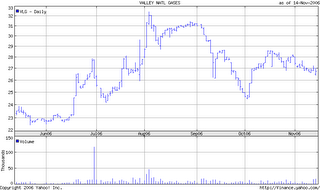The Washington Post this morning had a good article on the coming IPO for Hertz Global Holdings, the largest car rental company in the world. Less than a year ago, three investment firms bought Hertz from Ford Motor Co. for $15 Billion, putting up $2.3 Billion of their own money and then loading up Hertz with more than $12 Billion in debt.
Now it gets more interesting. The three investment firms recently paid themselves a $1 Billion dividend and plan to pay themselves an additional $400 Million upon completion of a soon to be completed Initial Public Offering (IPO). After the IPO, the three firms will still control 72% of Hertz, which would be valued at $18 Billion including $12 Billion in debt.
Let’s do the math: the investment firms put down $2.3 Billion, 15.33% of the purchase price into Hertz. In less than a year, the investment firms will have paid themselves $1.4 Billion and will still control 72% of Hertz’s equity of $6 Billion equal to $4.3 Billion. In less than a year, the $2.3 Billion investment will have turned into $5.7 Billion or a return of 148%.
No wonder private equity firms are so hot and the graduates of the Wharton School MBA program are clamoring to work for private equity investment firms.
Lets ask and try and answer a few questions here:
1. Did Ford undervalue Hertz when it sold it to the 3 investment firms?
Based on the S-1 filing for the Hertz IPO, we see that earnings for Hertz were $158.6 Million is 2003, $365.7 Million in 2004, and $371.3 Million in 2005 through December 20th. If we round up to $375 Million for earnings in 2005 and divide the purchase price of $12 Billion by $375 Million, we get a Price to Earnings (P/E) ratio for Hertz in 2005 of 32. The valuation based on P/E appears to be high based on revenue growth of 8-10% per year. At first glance it certainly does not look like Ford undervalued Hertz.
2. How does the valuation of Hertz compare to its publicly traded competitor Avis Group?
Let’s take a look at Price to Sales. Price to Sales upon completion of the buyout was $12 Billion divided by $7.5 Billion in 2005 which equals 1.6. Avis Group is trading at only .11 times sales and is valued at $2 Billion versus the planned $18 Billion for Hertz.
What are we missing here?
Per the company description, Avis has approximately 6,600 car and truck locations in North America, Australia, New Zealand, Latin America, and the Caribbean.
Hertz, on the other hand, has approximately 7,600 locations in approximately 145 countries. Does having 1,000 more rental locations around the world equal 9 times the market capitalization?
Also, Avis is burdened with a substantial amount of debt just like Hertz will be after the IPO.
Hertz’s valuation after the IPO will look like a pig with lipstick in comparison to Avis.
3. What changed at Hertz to make the company worth 50% more in less than a year?
Good question. I haven’t figured out the answer yet to that given what I have read so far concerning the valuation and risks for Hertz.
4. Have the investment firms overloaded Hertz with too much debt?
Pretty close. As the S-1 states “We are highly leveraged and a substantial portion of our liquidity needs arise from debt service on indebtedness incurred in connection with the Transactions and from the funding of our costs of operations, working capital and capital expenditures.”
5. Does a firm that is burdened with a ton of debt justify such a high valuation?
The market values stocks per supply and demand in the marketplace. I am interested to find out who is buying shares of the Hertz IPO in order to justify the valuation.
To be continued...

